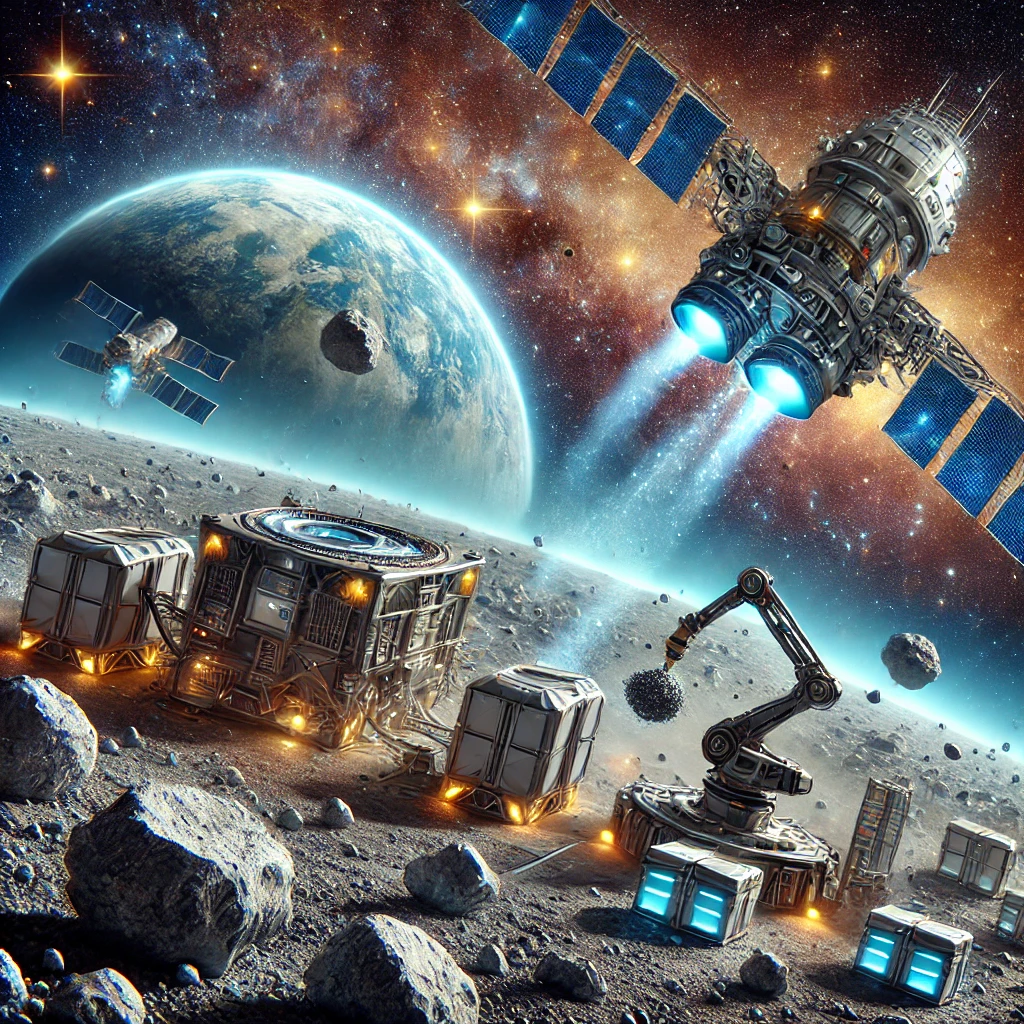Space mining, the extraction of resources from celestial bodies like asteroids, the Moon, and Mars, is transforming from science fiction into a lucrative reality. With global competition intensifying, advancements in technology and policy are shaping the future of this nascent industry.
Why Space Mining?
- Resource Scarcity on Earth: Essential minerals like platinum, rare earth elements, and gold are finite on Earth. Space offers an untapped reservoir. Platinum reserves could be depleted within 50 years at current consumption rates
- Rare earth elements, crucial for electronics, are geographically concentrated, with China controlling 85% of global production
- Sustainability Challenges: Mining on Earth causes environmental degradation. Space mining offers a cleaner alternative to meet growing industrial demands.
- Strategic Interests: Nations see space mining as a key to securing their technological and economic future.
Environmental Imperatives
Terrestrial mining’s environmental impact is severe:
- Mining operations contribute to 10% of global energy consumption (The World Counts)
- Acid mine drainage affects watersheds in over 50 countries
- Large-scale habitat destruction threatens biodiversity hotspots
Current Developments in Space Mining
- NASA’s Artemis Program:
- Aims to establish a sustainable presence on the Moon by 2030.
- Includes the extraction of lunar ice to produce water and oxygen for space exploration.
- NASA’s VIPER mission aim to map lunar ice deposits
- China’s Lunar Ambitions:
- In 2024, China plans to launch a robotic mission to mine helium-3, a potential fuel for nuclear fusion.
- The Chang’e program has already brought lunar samples back to Earth.
- Private Sector Initiatives:
- Asteroid Mining Ventures: Companies like AstroForge and Planetary Resources are investing in mining asteroids for platinum group metals.
- Lunar Mining Efforts: Tokyo-based ispace aims to develop Moon mining infrastructure.
Technological Innovations
Extraction Methods
- Optical mining using concentrated sunlight to extract volatiles
- In-situ resource utilization (ISRU) converting lunar ice to rocket fuel
- Microwave extraction of lunar volatiles demonstrated in laboratory conditions
- Magnetic separation techniques for lunar regolith processing
Transportation Solutions
- Solar electric propulsion for asteroid redirect missions
- Reusable lunar landers under development by multiple companies
- Orbital fuel depots planned for efficient deep space operations
Key Challenges in Space Mining
- High Costs: Space missions are capital-intensive. For instance, NASA’s Artemis program costs billions annually.
- Technological Barriers: Efficient mining, transportation, and processing technologies are still under development.
- Legal and Ethical Issues:
- The Outer Space Treaty (1967) prohibits claims of sovereignty over celestial bodies, complicating ownership rights.
- Disputes over equitable resource sharing remain unresolved.
Examples of Space Mining Potential
- Asteroid 16 Psyche:
- Valued at $10,000 quadrillion due to its metal-rich composition.
- NASA’s Psyche mission, launched in 2023, will study this asteroid to assess its viability for mining.
- Lunar Regolith Mining:
- Lunar soil contains helium-3, a potential clean energy source.
- The Moon’s south pole is a hotspot for ice deposits critical for life support and rocket fuel.
- Mars Mining:
- Mars has abundant iron and silica, which can support colonization efforts.
- NASA’s Perseverance rover is already studying Martian resources.
Impact on Geopolitics and Economy
- Emerging Space Race:
- The U.S., China, and Russia are investing heavily in space exploration, with India’s Chandrayaan-3 showcasing its capabilities.
- Private players like SpaceX are pushing the boundaries of affordability and innovation.
- Potential Economic Boom:
- The space mining industry, valued at approximately $1.64 billion in 2023, is projected to expand significantly, with an estimated annual growth rate of 17.6% between 2024 and 2030.(Grandview research)
- Companies are eyeing not just mining but creating supply chains for space-based manufacturing.
Space mining holds the promise of reshaping industries, geopolitics, and humanity’s relationship with the cosmos. While challenges remain, current advancements suggest a future where off-world resources will supplement Earth’s needs and fuel deeper space exploration. With policies, technology, and international cooperation, space mining could mark humanity’s next giant leap.

